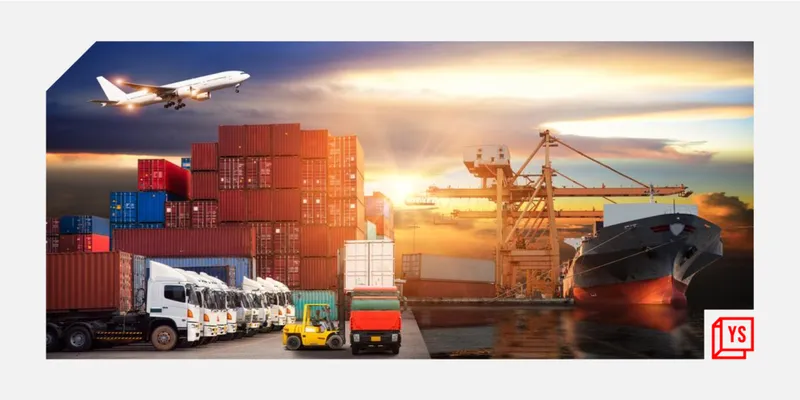National Logistics Policy: Game-changer for India’s logistics ecosystem?
The National Logistics Policy aims to enhance operational efficiency and reduce costs for the Indian logistics industry.
India is the second-most populated country and one of the leading economies in the world. The government has set its sight on making the country a $5 trillion economy in the next few years. The goal can’t be achieved without India’s logistics sector, which must evolve rapidly and play a greater role in economic development.
Towards this end, the government recently unveiled the National Logistics Policy (NLP), which can be a game-changer for the sector. Let’s take a look at various operational, regulatory, and other challenges affecting the growth of logistics in the country, and how NLP is expected to address these.
Challenges
Customs: There is significant red tape involved in customs operations today. The entire framework is complex and lacks clarity on certain regulatory processes. Moreover, the manual nature of operations makes progress sluggish. The Indian customs services already suffer considerable stress and a shortage of resources, and to grow international operations, India needs to introduce adequate automation and enhance the number of personnel manning the road borders, sea ports and airports.
Cost of operations: The high cost of logistics (13%-14% of the GDP) is easily one of the biggest banes of the sector. When compared with advanced economies, the logistics cost in India is much higher than the global benchmarks and makes business operations less profitable. It is estimated that by reducing the cost of logistics by just 10%, India can achieve export growth of 5%-8%. The NLP is aiming to bring down this cost to 8% within the next five years. If successful, it will add hundreds of billions of dollars to the national GDP.
Lack of multi-modal capabilities: India is an aberration when it comes to multi-modal infrastructure. The global average for road transportation is 25%, and 60% of cargo is handled by railways. On the other hand, 60% of logistics movement in India is by road and only 32% by railways. Waterways have a nominal 5% share, and this is one of the three core areas of attention for the NLP. This higher cost of logistics ends up eating into the margins and competitiveness of the Indian export industry. If the situation does not improve, it is expected that the high cost of logistics itself will affect the export sector by about $500 billion by 2030.
The NLP framework envisages the creation and development of an Integrated National Logistics Action Plan which will become a central masterplan for all the logistics infrastructure development initiatives. Through the Gati Shakti initiatives, there are a lot of projects underway across various modes of transportation. If the inter-ministerial and inter-departmental creases are ironed out by this policy then Indian logistics will definitely see spectacular growth in the years to come.
Poor technology and skills: There is a humongous need to automate logistics processes. Logistics marketplaces are helping truckers improve their all-round efficiency and price competitiveness, but there is a need to integrate similar automation and technologies such as RFID, GPS, warehouse management systems, etc. Further, there is also a major requirement for improving the skillset of the workforce and accessibility to new-age technological solutions.
High fuel costs: Rising fuel costs and surcharges are making operations costlier in India, and it is important to use all the technology available to optimise operations.
Industry fragmentation: About 85% of the Indian logistics market is dominated by unorganised sector players. The majority of trucking is handled by operators who have less than five vehicles in their fleets, which prevents them from taking economies of scale or switching to digital technologies.
In recent years, truckers have found some support through logistics marketplaces, which are enabling them to use cutting-edge solutions without any need for investments in infrastructure. However, the complete benefits of technology would be visible once the entire supply chain is digitised and streamlined.

National Logistics Policy
It took over eight years for the government to develop, fine-tune, and eventually, unveil the National Logistics Policy. The numerous challenges make it a comprehensive legislation that aims to optimise policies, operational processes, last-mile delivery complications, wastage and lack of technology, among other key objectives. It is aiming to build an overarching framework that integrates various disciplines, sectors, and jurisdictional areas to create a unified, highly visible, and digital framework for the logistics ecosystem.
There are two major vision areas for the policy:
- Reduction of logistics cost by 5 percentage points of GDP in the next five years (from 13%-14% to 8%-9%)
- Improving India’s ranking in the global logistics performance index through a unified policy environment and integrating various institutions involved.
There are three main targets for the NLP:
- Reducing the cost of logistics to make India competitive at the global level by 2030.
- Taking India to the top 25 on the Logistics Performance Index ranking by 2030.
- Creating a data-driven decision support framework for an efficient logistics ecosystem.
To achieve these targets, the policy has identified four major steps that need to be implemented through the Comprehensive Logistics Action Plan (CLAP):
Integration of Digital Systems (IDS): The framework will digitally integrate 30 different systems from seven departments, and merge data from the road transport, railways, customs, aviation, and commerce departments.
Unified Logistics Interface Platform (ULIP): It is a highly integrated platform to confidentially exchange information on a real-time basis. This will bring all the digital services used by the transportation sector into a single portal, and significantly reduce the long and cumbersome processes for exporters.
Ease of Logistics (ELOG): The portal will enable industry associations to directly identify and pursue obstacles in operations and performance with relevant government agencies. Transparency and accessibility are two key elements.
System Improvement Group: This monitoring group will oversee all logistics-related projects regularly. Further, the CLAP is also expected to set benchmarks for service standards, talent development, building capacity, and development of logistics parks.
With the requirements of the sector at the core, the policy promotes economic growth, and generation of employment opportunities in the logistics sector, and is the step in making the Indian manufacturing sector competitive globally.
Edited by Kanishk Singh
(Disclaimer: The views and opinions expressed in this article are those of the author and do not necessarily reflect the views of YourStory.)








